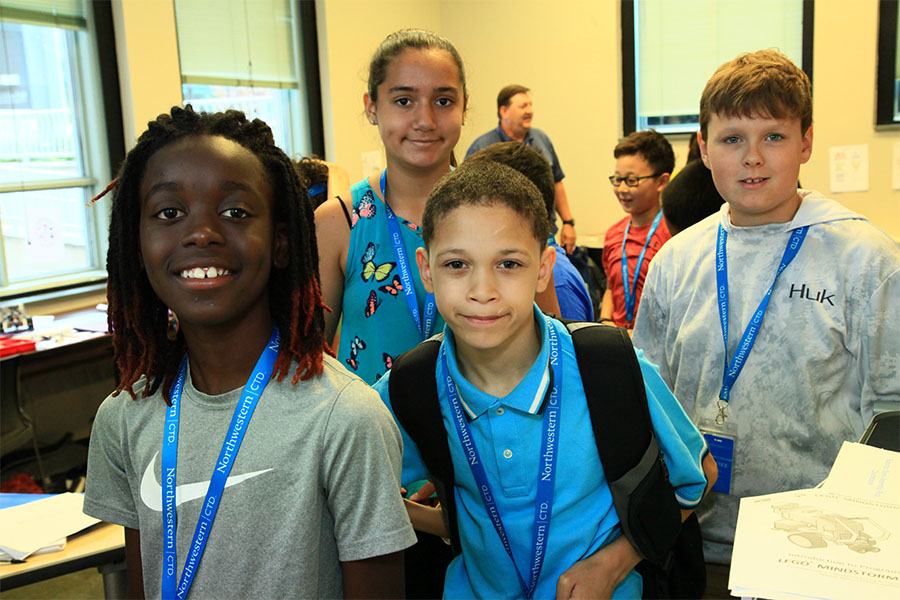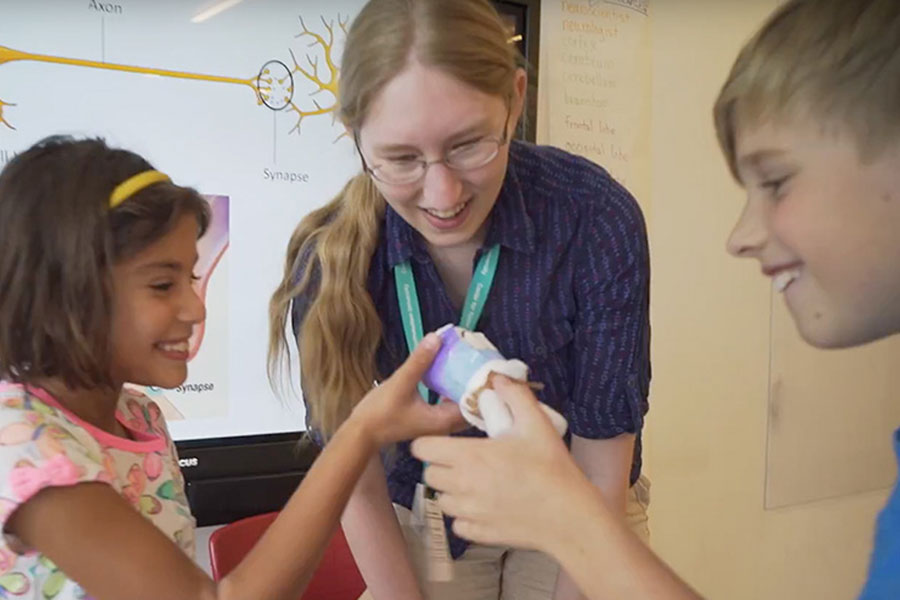The ABCs of AI
CTD offers AI-focused courses aimed at middle-school and elementary-school students
By Ed Finkel
In the wake of the explosion of interest since Open AI rolled out its more recent, generative iterations of ChatGPT, middle-school students have had the opportunity to delve into the burgeoning world of artificial intelligence through a six-week course at CTD. New classes are being rolled out aimed at late-elementary school students, the latter a family-facing course they will take jointly with their parent(s).
The new courses, online-only for now but expected to be offered in-person as well before long, were developed partly in response to students’ and families’ interest in the topic—although CTD is always reevaluating its catalog of offerings, especially in a domain like computer science that’s changing so rapidly, says Eric Calvert, associate director.
“[AI] is a particularly interesting technology for those of us who are interested in talent development because, unlike most of the other technologies that came before it, this seems to have particular affordance for potentially complementing and enhancing human cognitive and creative skills,” he says. That means “thinking about AI as an emerging thought partner—but a thought partner that has biases, a thought partner that has limitations, a thought partner that is disembodied, and a thought partner that has strengths and weaknesses different from ours.”
To maximize students’ abilities to reason and problem-solve, the courses are designed to expose them to AI in a way that’s oriented toward the “human in the mix,” Calvert says. “How can this increase my capacity for creative thinking?” he says. “Instead of allowing for-profit, app-based experiences drive AI in P-12 education, like in the social web, we wanted to be proactive as educators and help shape students’ mindsets from the beginning, instead of letting them be impacted by technology for four to five years and then scramble to catch up once we understood the impacts. ... We thought this was too important to sit on.”
The course for grades 6-8, “Smart, Smarter, Smartest: Exploring the Future of Artificial Intelligence,” examines current and future uses of AI in academia, industry, medicine, the arts and elsewhere, with a focus on “what it means to be an ethical coder and technology power user,” according to the syllabus.
The course is helping students examine how AI is coded, although they’re not doing hard-coding themselves, says Rebecca Vonesh, coordinator of online programs. Using the computer education online resource code.org, the course is “helping people visualize things and go through the processes that AI developers go through when thinking about how to develop a tool,” she says. “Another strand is talking about language and thinking—what we think of as being human, what elements [of AI] are parallel to human thinking, and what it means to have AI process information for us.”
In the final project for the course, students role-play as members of a congressional committee asked to look at AI and its applications in a wide variety of fields, Vonesh says. “Then, they are going to go through and set some guidelines for how we should use AI in our world,” she says.
 Another assignment has involved creating a timeline to put AI in the context of developments in logic and robotics “over the last several hundred, if not thousands of years,” Vonesh says. “This is something we’ve been slowly building toward, as a species. Once you understand that trajectory, that elements of AI have been functioning for decades, that helps you to take more of an analytical look and less of an emotional—‘oh, no, it’s coming to get me,’ kind of thing. This is a new space in scientific development. Figuring out how to use it to make our world better is going to be key. And understanding some of the spaces where we’re going to want to create rules around it.”
Another assignment has involved creating a timeline to put AI in the context of developments in logic and robotics “over the last several hundred, if not thousands of years,” Vonesh says. “This is something we’ve been slowly building toward, as a species. Once you understand that trajectory, that elements of AI have been functioning for decades, that helps you to take more of an analytical look and less of an emotional—‘oh, no, it’s coming to get me,’ kind of thing. This is a new space in scientific development. Figuring out how to use it to make our world better is going to be key. And understanding some of the spaces where we’re going to want to create rules around it.”
“Adventures in Artificial Intelligence: A.I. at Home, School, and Beyond,” an option planned for third- through fifth graders offers a look at why there’s such a buzz around AI and what its practical uses might be. And “A.I. and Me: Exploring the Role of Technology in Our Lives,” gives third and fourth graders and their parents a sense of how AI works and how it’s already impacting people’s day-to-day lives.
The first series of courses is designed to be more conceptually focused than down in the weeds of learning how to code, Calvert says. “It’s designed to give students some hands-on exposure to different AI applications and to think a lot about and talk about the ethical issues of AI, and thinking about how AI might be impactful in their own lives,” he says. “They’re not super-technical courses. They don’t require extensive backgrounds in computer science. Students don’t have to be fluent in a programming language coming in.”
Vonesh says the material in the courses parallels for students what they’re seeing the adults in their lives do with AI. “Figuring out how AI will change things, and what does this all mean?” she says. “They get a sense of how it works. They also get to think about what kind of boundaries they might want to put around it. … They get to be part of this bigger, broader conversation that’s happening.”
Calvert expects the course sequence to be reevaluated early and often. Different courses are offered seasonally. “That’s why we made this first group of courses so conceptual,” he says. “They’re not contingent on which version of Chat GPT the teacher is demonstrating, and we know generative AI tools themselves will likely advance at a rapid clip given the progress we have seen over just the last year.”
Down the road, CTD likely will move to a more hard-core computer science experience for students interested in moving to the next level, Calvert says. “As the toolset evolves, and it’s becoming more clear what use-cases are going to be most forward in the lives of youth and adolescents, we will update and add more courses,” he says.
Calvert can see applications that bridge into the Center’s robotics sequence, for “people who might eventually be the developers of chat-bots, or applications that are informed by data that AI interprets, coming in through the internet of things,” he says. “We’ve talked already about wanting to do courses related to IOT, introducing sensors and electronics, and talking about the internet of things as the emerging nexus between the physical world and the digital world. AI will be an important part of making sense of that data.”
Ethical considerations in the use of AI will continue to be central, Calvert says. “We want to teach students to use these tools in the right way—when to use them, when not to, when to disclose that you have used them. What are our responsibilities as far as checking the quality of the output?” he says. “We’re thinking about, ‘What would bright kids benefit from knowing about that application, so they can create something more useful and less harmful, that creates an opportunity for them to achieve later in life, or even to create and share something new now.’ ”
AI tools are rapidly lowering the age at which people can enter certain fields of human endeavor, Calvert says. “That brings new responsibilities to educators to prepare students, particularly precocious students who are eager to be out in the world,” he says. “We wanted to start with these courses and take a pure look at AI, conceptually. As the practice and ethics in education begin to evolve a bit more, we will make a bigger push to integrate the AI experience into courses that aren’t explicitly focused on AI. That’s probably a couple years down the road.”

